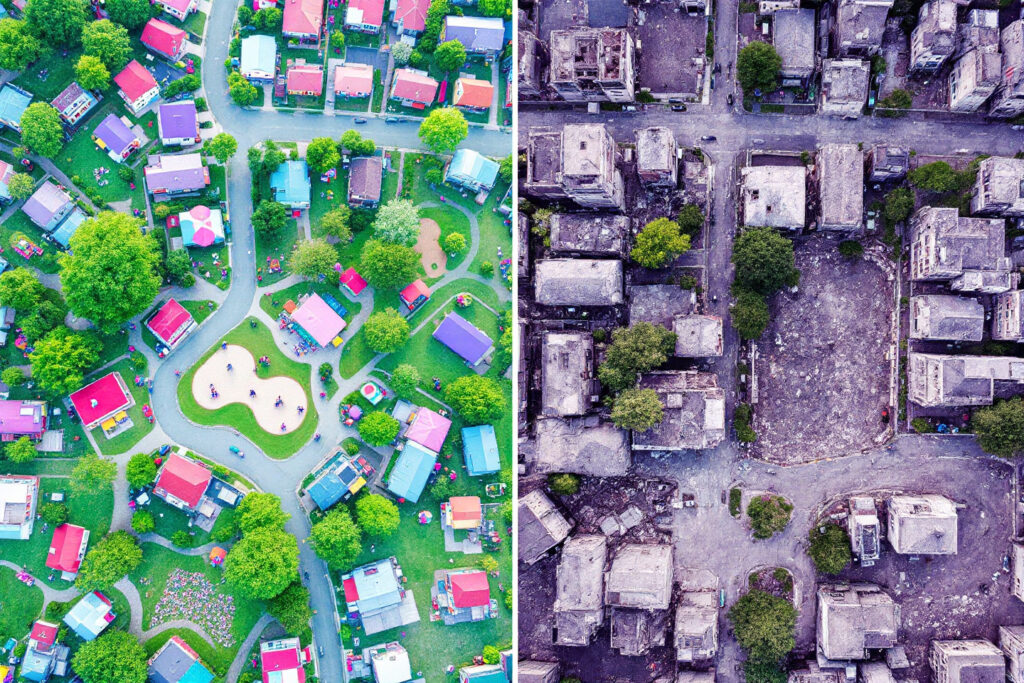The Moving to Opportunity (MTO) experiment was a landmark housing mobility study conducted by the U.S. Department of Housing and Urban Development (HUD) between 1994 and 1998. The goal was to examine how relocating low-income families from high-poverty neighborhoods to lower-poverty(wealthy) areas could affect housing quality, economic mobility, health, and social outcomes.
This post explores the design, key findings, and policy implications of the MTO experiment, shedding light on how neighborhood environments shape individual opportunities and long-term economic outcomes.
🏡 MTO Experiment Design: How It Worked
The study was conducted in five major U.S. cities:
📍 Baltimore, Boston, Chicago, Los Angeles, and New York.
A total of 4,608 low-income families were randomly assigned to one of three groups:
1️⃣ Experimental Group (Targeted Housing Mobility Program)
- Received housing vouchers to move to low-poverty neighborhoods (where poverty rates were below 10%).
- Provided with mobility counseling services to assist in relocation.
2️⃣ Comparison Group (Traditional Housing Voucher Program)
- Received standard housing vouchers with no restrictions on location.
- Did not receive mobility counseling.
3️⃣ Control Group (Public Housing Residents)
- Continued receiving traditional public housing assistance or project-based housing support with no relocation opportunities.
The study aimed to determine whether moving to lower-poverty neighborhoods could improve economic, educational, and health outcomes for participants.
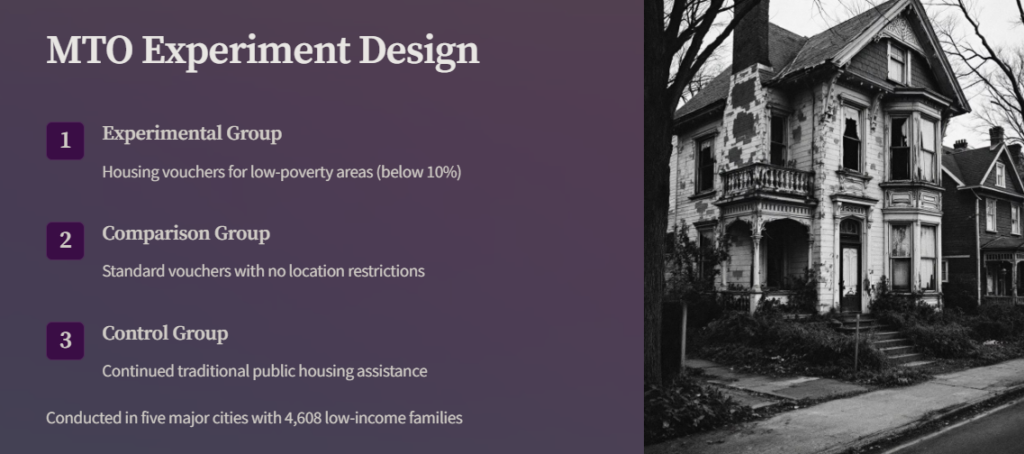
🔍 Key Findings from the MTO Experiment
👶 1. Long-Term Effects on Children
✅ Stronger positive effects for young children (under 13 years old):
- Higher college enrollment rates 🎓
- Increased lifetime earnings 💰
- Lower likelihood of becoming single parents 👨👩👧
👉 What This Means: Early exposure to better neighborhoods can significantly improve long-term economic and social mobility for children, reinforcing the importance of early childhood interventions.
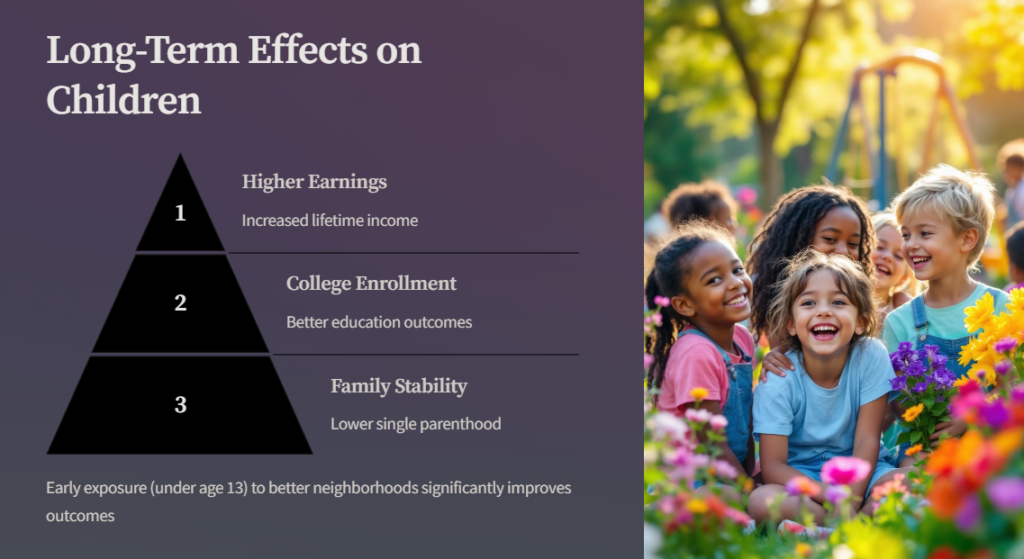
🏡 2. Housing Environment & Neighborhood Safety
✅ Families that moved to lower-poverty neighborhoods reported:
- Greater housing satisfaction 🏠
- Improved neighborhood safety 🚔 (lower crime exposure)
- Better access to schools and public services 📚
👉 What This Means: Housing mobility programs can significantly improve perceived safety and living conditions, which are essential for overall well-being.
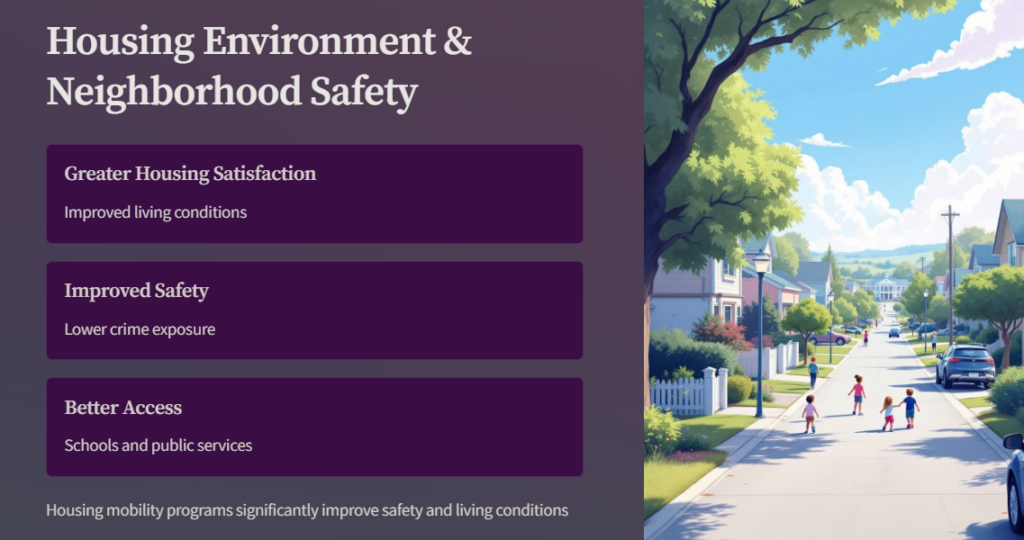
🩺 3. Health Outcomes
✅ Positive effects on adult mental and physical health:
- Lower rates of depression and anxiety among adults, particularly women.
- Reduced obesity rates and improvements in overall health.
👉 What This Means: Living in lower-poverty areas can reduce stress and improve long-term health, suggesting a strong link between neighborhood environment and well-being.
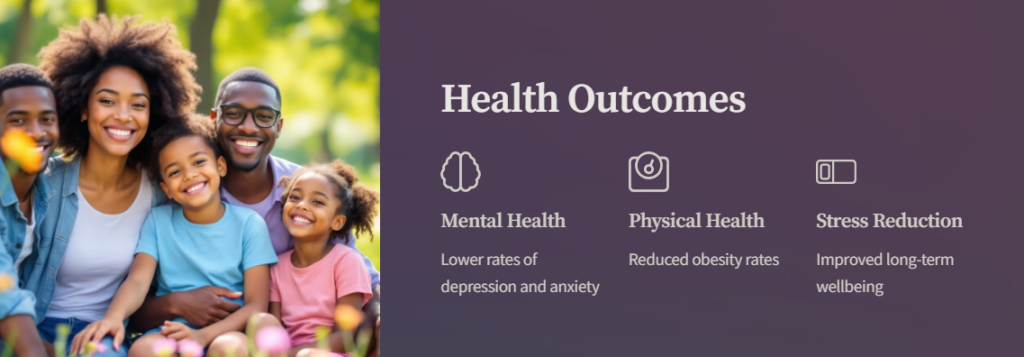
💼 4. Economic Mobility & Employment
❌ Minimal impact on adult employment and earnings:
- Relocating to lower-poverty neighborhoods did not significantly increase job opportunities or wages for adults.
- Most adults remained in low-wage or unstable jobs, even after moving.
👉 What This Means: While better neighborhoods improved safety and housing satisfaction, access to higher-paying jobs remained a challenge. More support may be needed to connect low-income residents to economic opportunities.
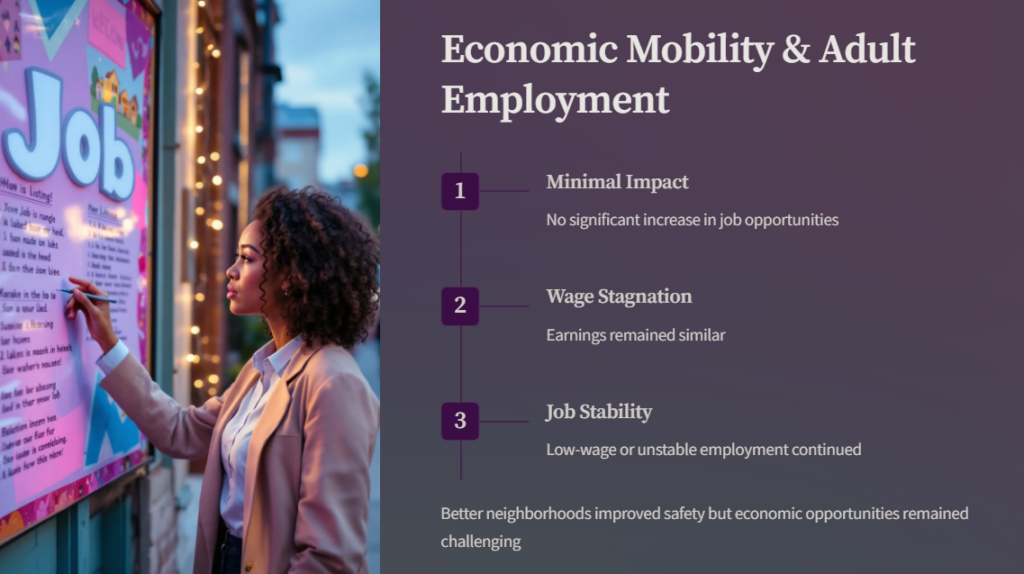
🗳️ 5. Social & Political Participation
❌ Reduced voter participation and community engagement:
- Adults who moved to lower-poverty neighborhoods were less likely to vote or engage in local politics.
- Many felt disconnected from their new communities, which affected social integration.
👉 What This Means: Moving to a new area can sometimes weaken social networks, highlighting the need for community support programs to ease transitions.
📌 Policy Implications: What Can We Learn?
The MTO experiment provides valuable lessons for housing and social policies:
🏡 1. Housing Mobility Programs Work – But Need to Start Early
- Moving young children to low-poverty neighborhoods can break the cycle of poverty.
- Programs should target families with young children for the greatest long-term impact.
💰 2. Housing Vouchers Alone Are Not Enough
- While vouchers help families move, job training, childcare, and education support are needed to improve employment and income.
- Integrating workforce development programs into housing policies could enhance economic mobility.
🤝 3. Strengthen Community Integration Efforts
- Moving alone does not automatically create social connections.
- Providing mentorship programs, school integration support, and social networking opportunities could help families build new support systems.
📚 4. Neighborhood Quality Matters for Long-Term Success
- Location plays a key role in shaping children’s future economic opportunities.
- Expanding affordable housing options in high-opportunity areas can help more families benefit from better neighborhoods.
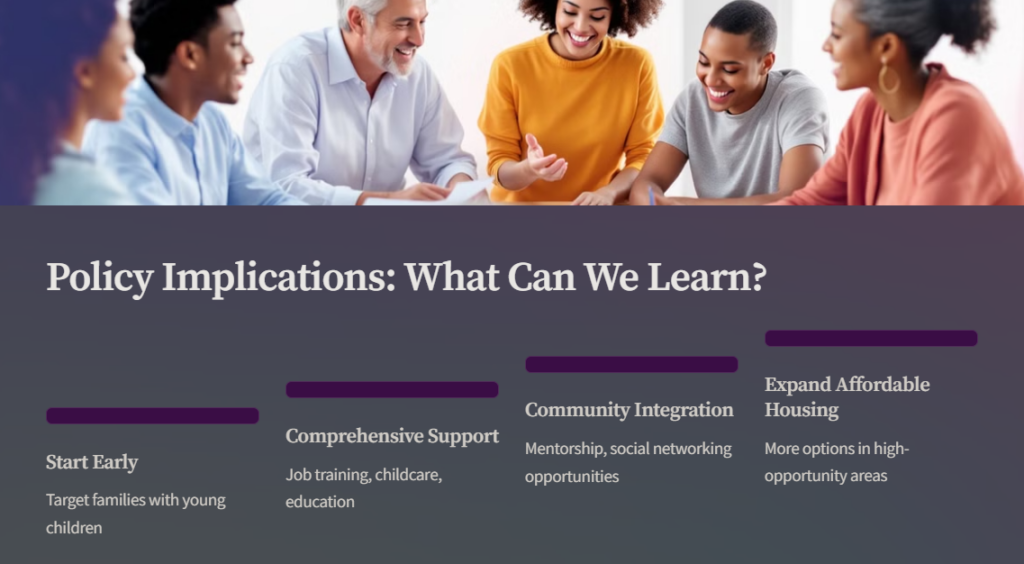
🔎 Final Thoughts: Does Moving Change Lives?
The MTO experiment proved that where you live matters—especially for young children. While relocating to lower-poverty neighborhoods did not significantly increase employment or income for adults, it had powerful, long-term benefits for children, improving education, earnings, and life stability.
🏡 Housing mobility programs can be a powerful tool for reducing intergenerational poverty, but they need to be combined with economic support programs to maximize impact.
🏡 Thinking About Buying Your First Home? Read This Next!
If you’re leaning toward buying a home but feel overwhelmed by the process, don’t worry—we’ve got you covered! Check out our in-depth guide:
🔹 “First-Time Home Buyer Guide: Everything You Need to Know” 🏠💡
In this guide, you’ll find:
✅ Assess Your Financial Readiness
✅ Explore Loan Options for First-Time Buyers
✅ Find the Right Home and Neighborhood
✅ Understand Closing Costs and Fees
✅ Make an Offer and Close the Deal
✅ Prepare for Homeownership
📌 Buying your first home is a major milestone—make sure you’re fully prepared!
